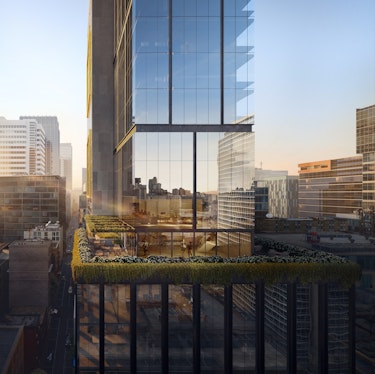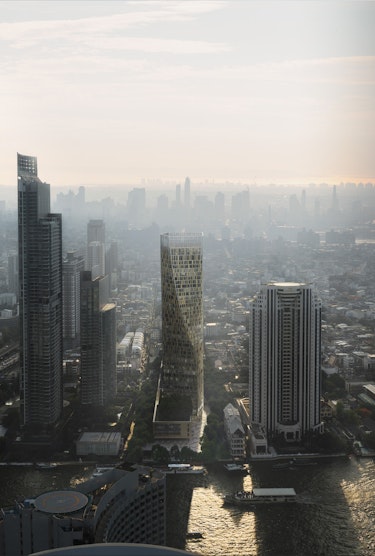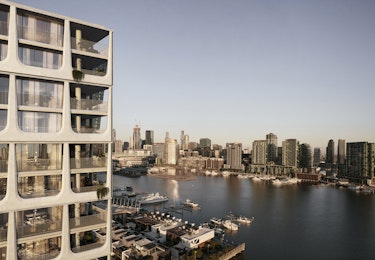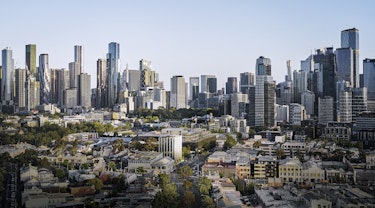Buildings have been discovering methods to take advantage of what rooftops can contribute to urban life as cities become more vertical. Because of the occupation of the roofs, contemporary architecture has acquired access to sunshine, natural air, and the horizon through halls for parties, restaurants, swimming pools, and other programs, making them appealing for both residential and commercial buildings. However, interest in enjoying the city from this perspective is not solely due to verticalization, nor is it a purely technical option. A high-rise is defined as any construction taller than 75 feet in real estate terms. A structure taller than four storeys must have two elevators, and a fire suppression system is required for buildings taller than seven floors. In the case of an earthquake, or if the underlying soil samples exhibit geotechnical characteristics such as high compressibility, an earthquake-resistant structure must be present.
Living in a high-rise building is an unforgettable experience. Most of us envision a single-family house with a yard, a driveway, and neighbors nearby when we think of "home

Historically, the notion of putting oneself high above has been commonly employed in military thinking as a deception for dominating territory, protecting oneself, and attacking. Castles are typically built at high and strategic positions to provide for observation of their surrounds as well as the ability to build fortifications when necessary. Strongholds have higher towers where the watch was kept. Churches and religious temples were also positioned at the highest elevations of cities, not only as a defensive and population control technique, but also as a symbol of strength, of connection with heaven, from where they are closer to the gods.
This reasoning was replicated inside the urban fabric as cities became increasingly complex and tall. The big buildings have come to represent progress, economic power, and political authority. The Empire State Building, which was erected in the 1930s in the United States and is renowned as the world's first big skyscraper, features an observatory at the top from which the public may be dazzled by the view of New York City. Binoculars and telescopes allowed for a close-up of the metropolis below. Along with the growth of capitalism comes a new advantage: to capitalize on the interest in aerial viewpoint and convert it into a commodity; sell the view and turn it into entertainment.
In this article, let’s talk about some advantages and disadvantages of living in a high rise!

Advantage: Separate from the Rest of the World
Being at home in a high-rise might feel like being in your own little bubble. Yes, I realise it sounds cheesy, but it's true! Living high means physically being cut off from the rest of the world. What happens on the ground level, including noise, has little to no effect on us (unless the windows are open).
The attractiveness of living this way differs from person to person. Living high up seems instinctively wonderful to me - I can't describe it. It's as easy as feeling at ease and relaxed at home. This undoubtedly includes the breathtaking sights. Higher floors are further away from contaminants in the air, such as carbon dioxide. The majority of residential complexes have a pressurized corridor system. A rooftop machine pushes air down into the passageways here. Then fresh air enters the residence through a bathroom duct and is discharged.
Taller structures can allow for more natural light. Sunlight can aid in the reduction of mildew and mould formation. It may also help people feel happier and more relaxed, which is a win-win situation for both residents and businesses. Another advantage of living on upper levels is that there is less noise and a greater view.

Increases Housing Affordability
Prices may fall as the number of new dwellings increases. When there is more supply than demand, the market turns into a buyer's market. In this sort of economy, home is frequently more inexpensive for purchasers.
While this is an oversimplified picture of housing prices, it is true that home building in nations such as the United States and Canada has fallen well short of what is required to handle population growth and migration, driving up prices in desired locations. As previously said, these are the metropolitan areas where high-rise development makes the most sense.
Even if new buildings are sold at above-market prices, building high exerts downward pressure on pricing. These new developments will be deemed the mid-market alternative in a few decades, and in the interim, richer inhabitants will not be fighting for a limited supply of older houses against lower-income renters, which is a major source of displacement.
Creating more cost-effective housing can assist in keeping people off the streets. It is also critical to have more inexpensive homes in locations where living costs are higher. For example, Manhattan's cost of living is 154% more than the national average – any increase in housing supply can assist pricey cities inch closer to solutions to the affordability dilemma.

While this is a human trait, it is also a strategy for distancing oneself from urban and societal issues that can only be seen and experienced "below." When you're at the top, it's difficult to come down. No surprise, penthouse residences are the most valuable, and restaurants dedicated to elite audiences, constantly tied to the wealthiest section of society, isolating these strata from the everyday experiences of the urban fabric. Detachment, on the other hand, is an illusion, and this heightened perspective is part of the cities and its issues. Certeau calls this "the fiction of knowledge" to position oneself as this all-seeing point.
